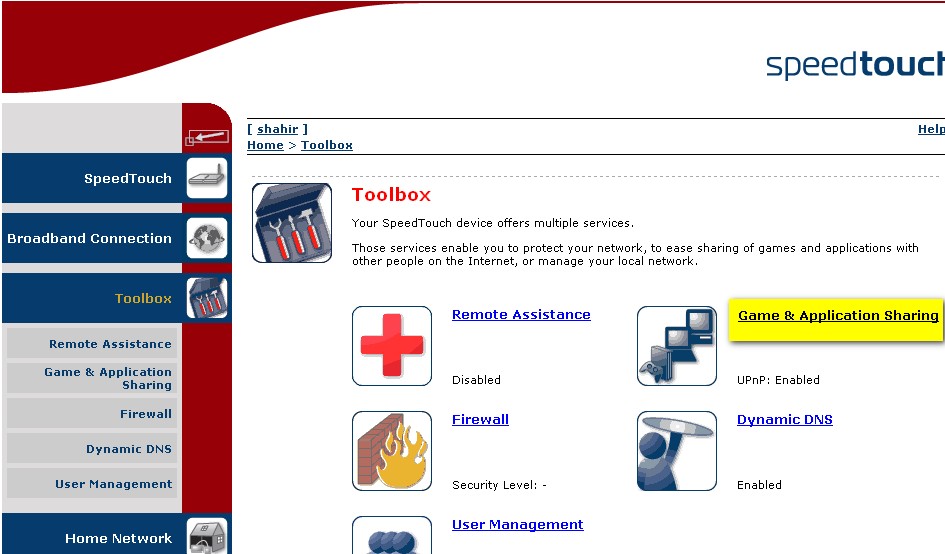Maximum Transmission Unit (MTU)
In computer networking, the term Maximum Transmission Unit (MTU) refers to the size (in bytes) of the largest PDU that a given layer of a communications protocol can pass onwards. MTU parameters usually appear in association with a communications interface (NIC, serial port, etc.). The MTU may be fixed by standards (as is the case with Ethernet) or decided at connect time (as is usually the case with point-to-point serial links). A higher MTU brings greater efficiency because each packet carries more user data while protocol overheads, such as headers or underlying per-packet delays remain fixed, and higher efficiency means a slight improvement in bulk protocol throughput. However, large packets can occupy a slow link for some time, causing greater delays to following packets and increasing lag and minimum latency. For example, a 1500 byte packet, the largest allowed by Ethernet at the network layer (and hence most of the Internet), would tie up a 14.4k modem for about one second.
Path MTU discovery
The Internet Protocol defines the “path MTU” of an Internet transmission path as the smallest MTU of any of the IP hops of the “path” between a source and destination. Put another way, the path MTU is the largest packet size that traverse this path without suffering fragmentation.
RFC 1191 describes “Path MTU discovery”, a technique for determining the path MTU between two IP hosts. It works by setting the DF (Don’t Fragment) option in the IP headers of outgoing packets. Any device along the path whose MTU is smaller than the packet will drop such packets and send back an ICMP “Destination Unreachable (Datagram Too Big)” message containing its MTU, allowing the source host to reduce its assumed path MTU appropriately. The process repeats until the MTU is small enough to traverse the entire path without fragmentation.
Unfortunately, increasing numbers of networks drop ICMP traffic (e.g. to prevent denial-of-service attacks), which prevents path MTU discovery from working. One often detects such blocking in the cases where a connection works for low-volume data but hangs as soon as a host sends a large block of data at a time. For example, with IRC a connecting client might see up to the ping message, but get no response after that. This is because the large set of welcome messages are sent out in packets bigger than the real MTU. Also, in an IP network, the path from the source address to the destination address often gets modified dynamically, in response to various events (load-balancing, congestion, outages, etc.) – this could result in the path MTU changing (sometimes repeatedly) during a transmission, which may introduce further packet drops before the host finds the new safe MTU.
Most Ethernet LANs use an MTU of 1500 bytes (modern LANs can use Jumbo frames, allowing for an MTU up to 9000 bytes), however border protocols like PPPoE will reduce this. This causes path MTU discovery to come into effect with the possible result of making some sites behind badly-configured firewalls unreachable. One can possibly work around this, depending on which part of the network one controls; for example one can change the MSS (maximum segment size) in the initial packet that sets up the TCP connection at one’s firewall.
This problem has surfaced more frequently since the introduction of Windows Vista which introduces the ‘Next Generation TCP/IP Stack’. This implements “Receive Window Auto-Tuning that continually determines the optimal receive window size by measuring the bandwidth-delay product and the application retrieve rate, and adjusts the maximum receive window size based on changing network conditions”.[2] This has been seen to fail in conjunction with older routers and firewalls that appeared to work with other operating systems. It is most often seen in ADSL routers and can often be rectified by a firmware update.
ATM backbones, an example of MTU tuning
Sometimes it is preferable from the point of view of efficiency to artificially declare a reduced MTU in software below the true maximum possible length supported. One example of this is the case where IP traffic is carried over an ATM (Asynchronous Transfer Mode) network. Some providers, particularly those with a telephony background, use ATM on their internal backbone network.
Using ATM at optimum efficiency is achieved when packet length is a multiple of 48 bytes. This is because ATM is sent as a stream of fixed-length packets (known as ‘cells’), each of which can carry a payload of 48 bytes of user data with 5 bytes of overhead for a total cost of 53 bytes per cell. So the total length of the transmitted data length is 53 * ncells bytes, where ncells = the number of required cells of = INT((payload_length+47)/48). So in the worst case, where the total length = (48*n+1) bytes, one additional cell is needed to transmit the one last byte of payload, the final cell costing an extra 53 transmitted bytes 47 of which are padding. For this reason, artificially declaring a reduced MTU in software maximises protocol efficiency at the ATM layer by making the ATM AAL5 total payload length be a multiple of 48 bytes whenever possible.
For example, 31 completely filled ATM cells carry a payload of 31*48=1488 bytes. Taking this figure of 1488 and subtracting from it any overheads contributed by all relevant higher protocols we can obtain a suggested value for an artificially reduced optimal MTU. In the case where the user would normally send 1500 byte packets, sending between 1489 and 1536 bytes requires an additional fixed cost of a 53 bytes transmitted, in the form of one extra ATM cell.
For the example of IP over DSL connections using PPPoA/VC-MUX, again choosing to fill 31 ATM cells as before, we obtain a desired optimal reduced MTU figure of 1478 = 31*48-10 taking into account an overhead of 10 bytes consisting of a Point-to-Point Protocol overhead of 2 bytes, and an AAL5 overhead of 8 bytes. This gives a total cost of 31*53=1643 bytes transmitted via ATM from a 1478 byte packet passed to PPPoA. In the case of IP sent over ADSL using PPPoA the figure of 1478 would be the total length of the IP packet including IP headers. So in this example keeping to a self-imposed reduced MTU of 1478 as opposed to sending IP packets of total length 1500 saves 53 bytes per packet at the ATM layer at a cost of a 22 byte reduction of the length of IP packets.
A maximum MTU for PPPoE/DSL connections is 1492, per RFC 2516: 6 bytes being PPPoE header, leaving enough room for a 1488 byte payload, or 31 full ATM cells.
Finally: The standard value of MTU is to be 1492 …. and in case of browsing problems or MSN connectivity problems it should be decreased to the values 1422 and 1420.
Reference: Wikipedia
Best regards










مرحبا، شكرا لك على المقال المفيد